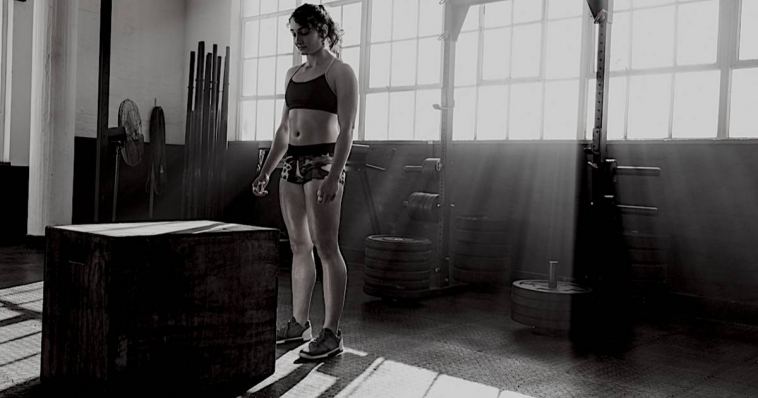- Like
- SHARE
- Digg
- Del
- Tumblr
- VKontakte
- Flattr
- Buffer
- Love This
- Save
- Odnoklassniki
- Meneame
- Blogger
- Amazon
- Yahoo Mail
- Gmail
- AOL
- Newsvine
- HackerNews
- Evernote
- MySpace
- Mail.ru
- Viadeo
- Line
- Comments
- Yummly
- SMS
- Viber
- Telegram
- JOIN
- Skype
- Facebook Messenger
- Kakao
- LiveJournal
- Yammer
- Edgar
- Fintel
- Mix
- Instapaper
- Copy Link
Not many words make people shift in their seats as the word posture does. Probably just reading it made you straighten up. What did you do? How are you sitting now?
When most people think of good posture, they think of sitting and standing up straight with the shoulders pulled back. Trying to maintain this position can be tiring.
Many people give up, falling into the hunched position encouraged by gravity and our screens. Even those who manage to hold themselves in a good posture may experience tension and discomfort. So what’s the point?
The Downside of the Urge to Hunch or Slouch
While attempting to maintain good posture can cause discomfort, it’s better than the alternative. Sitting or standing for prolonged periods without actively engaging our muscles for support leads to an extra load on the joints and ligaments of the spine.
These structures aren’t designed to be loaded in a bent position for long periods, and the additional stress can result in stiffness and pain.
Our spine isn’t the only thing that suffers when we hunch and slouch. When the upper back stiffens, our rib cage and lung expansion are restricted. This restriction limits oxygenation and increases the work of breathing, which can trigger our stress response and impair cognition.
When your upper back rounds and your head sticks forward over your body, tension can develop in the muscles attaching to your jaw and face. This tension can result in the movement of your jaw becoming painful or restricted and contribute to headaches.
Many other hormonal and behavioral effects are associated with bad posture, some of which are discussed in this popular TED talk by social psychologist Amy Cuddy. But maintaining good posture is easier said than done.
To Maintain Good Posture, Avoid the Pitfalls
Many people develop imbalances when they try to achieve and maintain good posture. Imbalances occur when parts of your body that generally work together can no longer cooperate because of a mismatch in strength or mobility.
Imbalances can result in tension and discomfort and cause dysfunction in other parts of the body.
This pitfall comes from how most people think about attaining good posture. A common misconception is that to have good posture; you need to get into a straight position and hold it there while you sit or stand.
When you ask your body to complete a task such as stand up straight, or pull the shoulders back, without telling it how to accomplish this, the body will use the muscles you use the most.
This reliance on strong muscles results in the prolonged use of muscles that are already strong, while weaker groups are neglected. Over time, stronger muscles get stronger and tighter, while weaker muscles atrophy.
For example, if you’ve experienced lower back pain when sitting up straight, this may be because your stronger lower back muscles are working too hard, attempting to compensate for your weaker lower abdominal and pelvic muscles.
The Most Common Imbalance
Your lower back and pelvic muscles are the most common site of imbalance. The muscles that arch your lower back are often overused in many activities, including prolonged sitting and standing, exercising, and carrying.
Conversely, the muscles of your lower abdomen and pelvis are usually under-utilized. This neglect is partly because many of us experience stiffness and rounding in the upper back, and our body compensates for this by overarching the lower back when we ask it to sit or stand up straight. The result is an exaggeration of our natural spinal curves.
When the lower back is over-arched, the pelvis will tip forward, reducing activation in the lower abdominal and gluteal muscles. If left unchecked, this imbalance can contribute to dysfunction throughout the body.
Rethink Good Posture
Instead of thinking of posture as a position, think of it as the balance of strength and mobility across the muscles and joints of your body.
Rather than trying to achieve good posture by sitting or standing up straight, use your body in a way that promotes musculoskeletal balance.
An excellent way to improve posture is to move more. Setting reminders to move regularly by incorporating methods to move more into your day, such as:
- Vary your work position with an adjustable desk.
- Use the restroom on another floor, so that you can climb the stairs.
- Vary the type of manual work you are doing.
A variety of movements will mix up the loading pattern on your body and reduce imbalances.
However, movement without conscious effort is usually not enough to resolve significant imbalances.
Unless we are performing a new type of movement, or consciously activating weak muscles and relaxing strong ones, the body will still use the muscles with which it is most familiar. You may still experience discomfort or tension, even after taking a break to move around.
Actively Improve Posture
Consciously challenging your weaker muscles and relaxing your overactive muscles is the best way to restore balance. But, this is easier said than done.
Overactive muscles are difficult to relax, and underactive muscles are hard to feel and use.
The rest of this post will discuss techniques designed to help you restore balance while:
- Sitting
- Standing
- Performing functional tasks like manual work and exercise
Improve Lower Back Posture
The first step to achieving balance across the muscles of your lower spine and abdomen is to move the area through its full range of motion, rather than to confine it to an arched or slouched position. You can do this with an exercise called the pelvic tilt.
If you have limited control of your lumbar spine and pelvis, you may find the pelvic tilt to be difficult at first.
These exercises are fundamental, and we recommend them for people of all ability levels.
To perform the pelvic tilt:
- Sit in a comfortable position with your feet on the floor. Place the hands around the hips so that you can feel the bony bit on the front of your hip with your index finger. Wrap your thumb around and feel the bone at the back of the pelvis. Imagine you are holding a big bowl of water in your hands.
- Tip the pelvis forward as far as you can, as if pouring water out of the front of the bowl. Your lower back will arch, and you will roll forward onto your crotch. Tilting forward will activate the muscles of the lower back while reducing the load on its joints and ligaments. If held for a prolonged period, the tipped forward position will lead to overactivity in muscles of the lower back and front of the hips. The muscles of the lower abdomen and pelvis will be put at a mechanical disadvantage, leading to an imbalance.
- After you have pushed the bowl forward as far as it will go, roll backward (tipping water out of the back of the bowl) while preventing your chest and upper back from slouching. As your pelvis tips backward, activate the lower abdominal muscles.
- A useful cue is to imagine that you are using the area underneath your belly button to zip up your pants. Tipping backward and drawing up like this will stretch the lower back and activate the muscles of the lower abdomen and pelvic floor.
- Sitting in this tilted back position will offload the muscles of the lower back, but may stress the joints of the spine if held for a prolonged period.
- Rather than arch or slouch, try keeping the back and pelvis in the middle of the two positions. With a neutral pelvis, the load is balanced across the front and back of the trunk. The spine, abdominal, and back muscles all take a share of the load.
Repeat the pelvic tilt five times to activate and stretch both sides of the trunk, and then finish in a neutral position. You can find the neutral by moving your bowl of water to a level position so that the bony bits on the front and back of the pelvis are even in height.
Another way to tell is by looking at the waistband of your clothing. In a neutral position, the waistband usually is parallel to the ground rather than at an angle.
You can perform the pelvic tilt while sitting, standing, or exercising. It can function as a preventative measure or as a technique to relieve pain in the back or hips. It’s one of the best ways to assess and improve the most common site of postural imbalance.
If you have an existing back injury, you may experience some pain when pelvic tilting. This pain is normal. Reduce the range of motion until the movement is no longer painful, and then gradually build it up again.
Or, try imagining that a string is pulling the top of your head to the ceiling, making you as tall as possible as you perform the tilt. This lifting will help to unload the spine and reduce pain.
Another effect you may experience is the feeling of being hunched when you tip the pelvis backward. This feeling is also familiar, and it probably means that your upper back has stiffened into a rounded position. This stiffness may be why your lower back was arching excessively in the first place: to keep your upper back more upright.
Improve Upper Back Posture
Now that you’ve begun to improve your control of the lumbopelvic region, you can move on to the second most common region of imbalance: the upper back and neck.
These areas may feel rounded now that the lumbopelvic region is in a neutral position. You will need to improve their ability to arch if we want to promote musculoskeletal balance.
You can extend the upper back, also known as the thoracic spine, over the back of a low-backed chair.
- Lace your fingers together behind your head, squeeze your shoulder blades together, and lean back so that the top of the backrest pushes into your back.
- To emphasize the extension of the upper back, limit arching of the lower back by keeping your lower abdominal muscles engaged.
- Hold this extended position for about fifteen seconds, feeling a stretch in your chest and upper back.
Stretching the muscles and joints of the upper trunk with the thoracic extension is an excellent way to reduce overactivity. But we still need to strengthen our underactive muscles.
The muscles between and below the shoulder blades are often underused, and activating them can help to relieve upper back, neck, and shoulder pain.
- With your pelvis in a neutral position, pull the chin back as if trying to be as tall as possible.
- Then, squeeze the shoulder blades down and back together.
- The body often compensates for limited movement of the shoulder blades by arching the lower back, so be sure to keep the pelvis neutral.
- The upper shoulders will also try to compensate during this movement, so remember to squeeze the shoulders down and back, rather than up and back. Perform the squeeze ten times to activate the muscles of the upper back.
There may not be much movement at first, and it will be hard to feel the muscles working..
It’s All About Balance
Good posture is traditionally thought of as standing and sitting up straight with the shoulders pulled back. This is difficult for many people to maintain, and those who do maintain it do so by often overusing their strong muscles.
To improve your strength, mobility, and risk of injury, think about posture as the balance between different muscles and joints of the body.
Improve your posture by introducing more movement to your daily routine and by consciously developing a balance between overused and underused muscles.
When performed regularly and deliberately, the pelvic tilt, thoracic extension, and shoulder retraction exercises will help you achieve and maintain balance without strain and discomfort, making good posture second nature.
Initially, these movements can be made difficult by stiffness in adjoining parts of the body.


